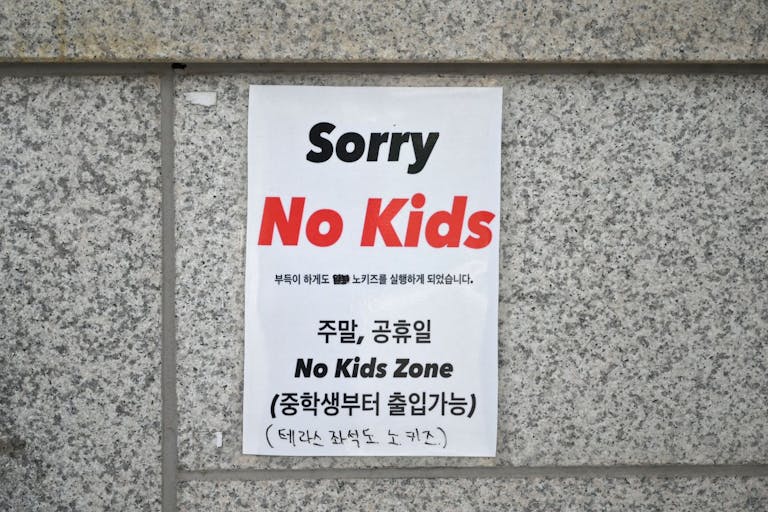
Can IVF ever be ethical? Here are some things to consider.
Nancy Flanders
·
South Korea’s population crisis grows as elderly surpass young adults
For the first time in documented history, South Korea’s population aged 70 and older has exceeded the number of people in their 20s.
South Korea has one of the lowest birth rates in the world.
The latest statistics have found that the population of Koreans in their 20s has fallen for the past four years straight; previously, it was the largest demographic group in the country.
Now, young adults in South Korea are outnumbered by the elderly.
The Korea Times reported that based on figures from the Ministry of Data and Statistics, the number of individuals in South Korea aged 70 and over has reached 6.54 million, surpassing the 6.3 million people in their 20s. The population of Koreans in their 20s has now dropped for four years straight, declining from 7.03 million in 2020 to 6.3 million last year, according to a report from Chosun Biz.
Previously, young people in their 20s outnumbered other age groups in South Korea, but now, they form the smallest adult segment of the country.
As Korea Joong Ang Daily pointed out:
The number of people in their 20s peaked at 7.03 million in 2020 and has since declined for four consecutive years — falling by between 140,000 and 210,000 annually. As a result, the size of the 20-something population fell behind that of the 70-and-over population — 6.54 million — for the first time since official statistics began in 1925.
By age group, people in their 50s were the largest group at 8.71 million, followed by those in their 40s at 7.81 million and 60s at 7.79 million. This marks a sharp contrast with just three decades ago, when people in their 20s formed the largest share of the population in Korea.
Such figures are not merely statistics, but reflect underlying problems regarding South Korea’s demographics and its future implications. A rising elderly population, along with fewer young people, indicates a future with even further reduced births and fewer workers. Earlier this year, a report by the Chosun Daily elaborated on the gravity of the problem:
Article continues below
Dear Reader,
Have you ever wanted to share the miracle of human development with little ones? Live Action is proud to present the "Baby Olivia" board book, which presents the content of Live Action's "Baby Olivia" fetal development video in a fun, new format. It's perfect for helping little minds understand the complex and beautiful process of human development in the womb.
Receive our brand new Baby Olivia board book when you give a one-time gift of $30 or more (or begin a new monthly gift of $15 or more).
The country has transitioned from a demographic bonus, where the economy naturally expanded with a growing workforce, to a demographic burden, where the number of employed individuals is projected to decline annually unless major changes occur. This shrinking workforce could potentially lead to long-term economic stagnation, with fewer people available to spend, inherit skills, or pay taxes.
Changes in South Korea’s labor market, such as how companies tend to hire more experienced workers instead of fresh college graduates, also make it challenging for young South Koreans to establish financial independence and start a family, contributing to the decline of marriage and childbirth. Moreover, the societal trend of prioritizing career aspirations over parenthood and childbirth is leading more young South Koreans to avoid marriage and parenthood altogether, perpetuating the decline in the social fabric and future of their country.
Although South Korea's birth rate rose for the first time in 2024, it was still the lowest in the world. In addition, many couples are leaving South Korea for sex-selective IVF, which only exacerbates the problem. The cultural preference for sons has led to widespread eugenics, with female babies aborted, killed at birth, or abandoned simply because they are girls. As these children become young adults, the resulting gender imbalance makes it more difficult for them to pursue marriage and family.
Multiple countries around the globe are facing population crises, and the situation is most dire in Asia. In addition to South Korea, countries like China, Japan, and Singapore are dealing with a decline in birth rates. Many of these governments have been spending billions to address the problem, but birth rates in these countries have continued to drop.
In addition, despite the plummeting birth rates, many Asian countries are continuing to push for expanded abortion access.
As birth rates continue to fall, several national leaders are frantically attempting to reverse course. But expanding abortion and ignoring cultural pitfalls that led to the underpopulation problem in the first place make it likely that the crisis will only continue to grow.
Live Action News is pro-life news and commentary from a pro-life perspective.
Contact editor@liveaction.org for questions, corrections, or if you are seeking permission to reprint any Live Action News content.
Guest Articles: To submit a guest article to Live Action News, email editor@liveaction.org with an attached Word document of 800-1000 words. Please also attach any photos relevant to your submission if applicable. If your submission is accepted for publication, you will be notified within three weeks. Guest articles are not compensated (see our Open License Agreement). Thank you for your interest in Live Action News!

Nancy Flanders
·
International
Angeline Tan
·
International
Bridget Sielicki
·
International
Cassy Cooke
·
Guest Column
Stefano Gennarini, J.D.
·
International
Angeline Tan
·
International
Angeline Tan
·
International
Angeline Tan
·
International
Angeline Tan
·
International
Angeline Tan
·
Human Interest
Angeline Tan
·